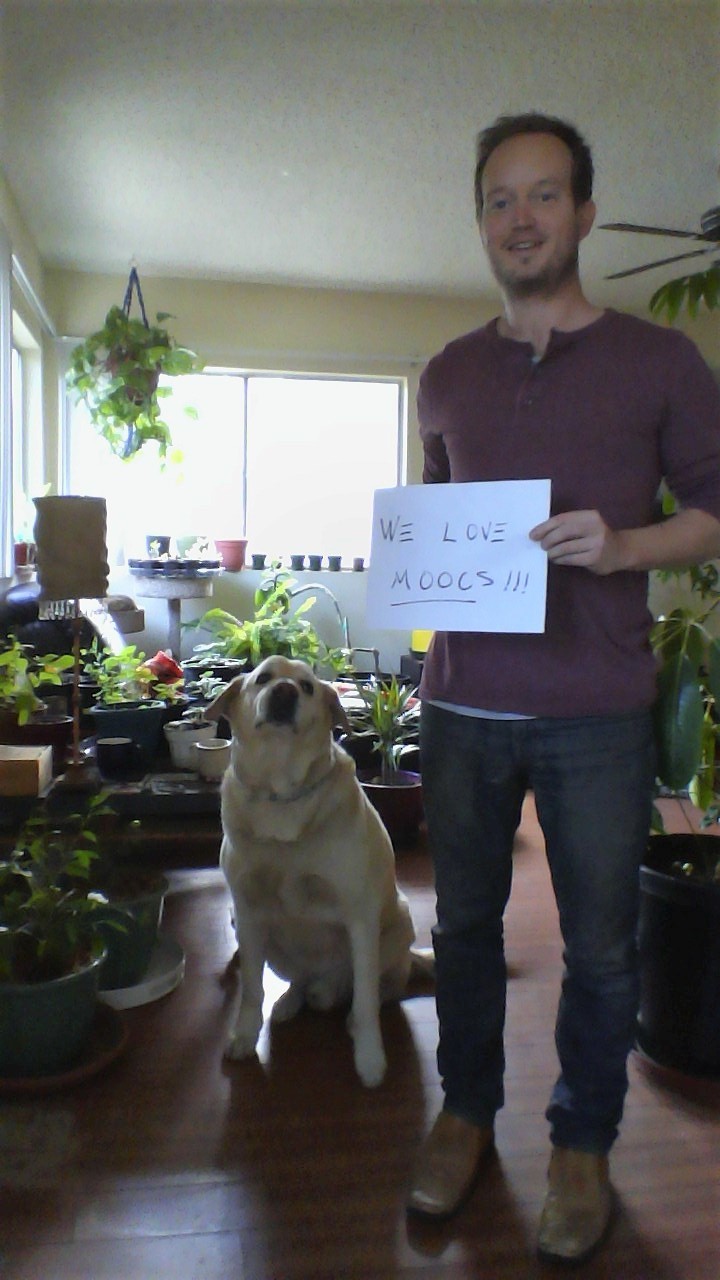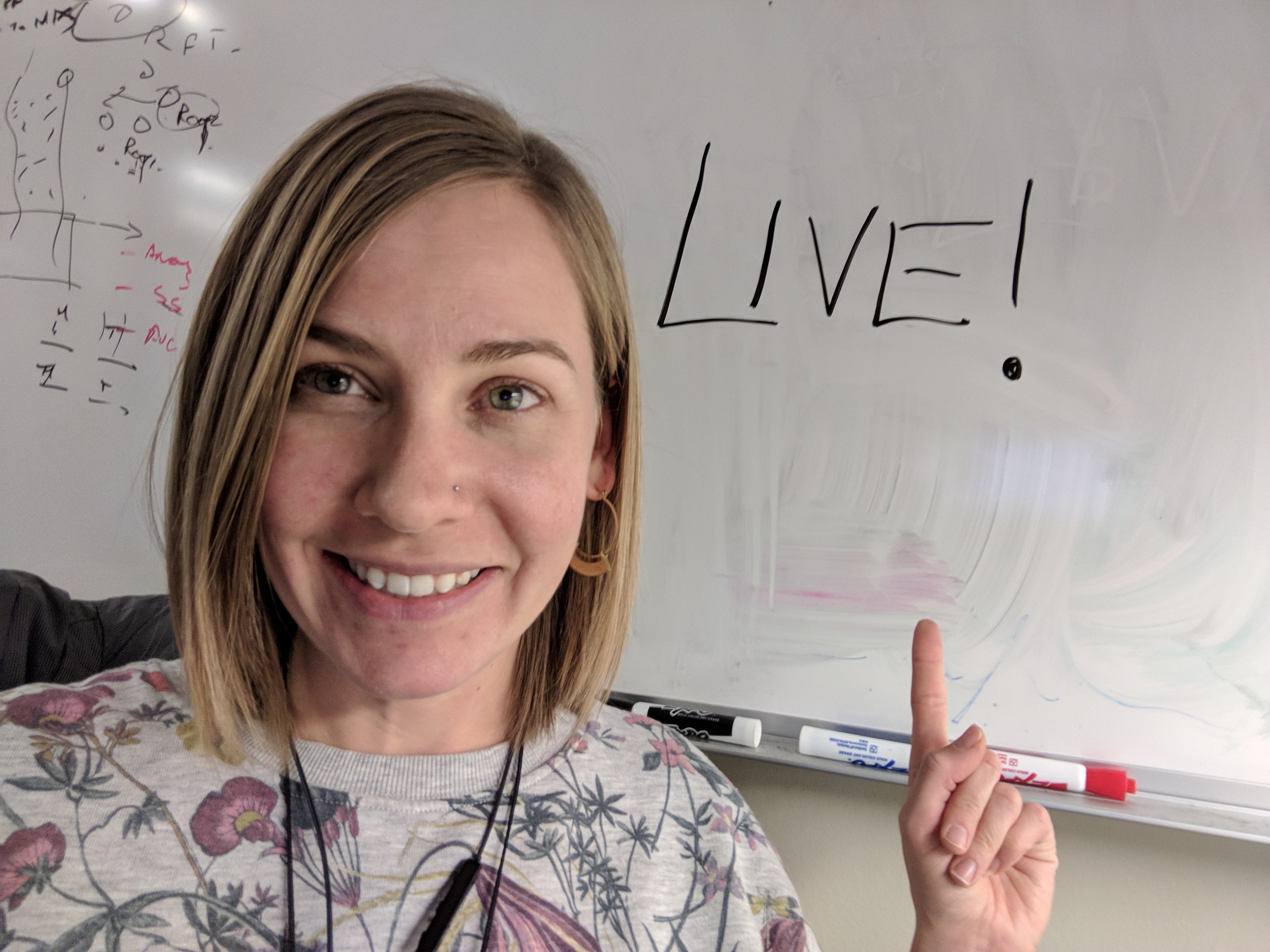- Home
- :
- All Communities
- :
- Services
- :
- Esri Training
- :
- Esri Training Questions
- :
- Re: Mar. 2, 2018 - Earth Imagery at Work AMA (Ask ...
- Subscribe to RSS Feed
- Mark Topic as New
- Mark Topic as Read
- Float this Topic for Current User
- Bookmark
- Subscribe
- Mute
- Printer Friendly Page
Mar. 2, 2018 - Earth Imagery at Work AMA (Ask Me Anything)
- Mark as New
- Bookmark
- Subscribe
- Mute
- Subscribe to RSS Feed
- Permalink
- Report Inappropriate Content
Live AMA Event on GeoNet: Friday, Mar. 2, 10:30 a.m. - 11:30 a.m. (PST)
We invite you to join Earth Imagery at Work MOOC instructors Kevin Butler and Emily Windahl here on the GeoNet Community for a LIVE AMA (Ask Me Anything) event. The AMA will take place in this discussion thread on Friday March 2, 2018 from 10:30 a.m. - 11:30 a.m. (PST).
*Click HERE to convert exact time for different countries.
This is an opportunity to ask Kevin and Emily questions about the course, about earth imagery data, Esri software, GIS or anything else that comes to mind.
How does the AMA work? During the AMA, you can post your questions by clicking the "Add Reply" button below and Kevin and Emily will reply to your questions in comments. You are welcome to post questions ahead of the AMA and they will answer them during the AMA. Please note: You must be logged in to post questions and see responses. Please see instructions on How to Log into GeoNet for the AMA.
We are live with Kevin Butler and Emily Windahl!
 |  Thanks for joining us! |
AMA Tips and GeoNet Community Guidelines
- When asking questions and comments during the AMA, remember to follow the GeoNet Community Guiding Principles: Be Helpful, Be Human, Be Smart.
- This discussion page will not auto-refresh, so please remember to refresh this page to see new questions, comments and replies.
10:30 am - And we're live! Go ahead and ask your questions!
11:00 am - We're halfway through, Great questions! Keep them coming!
11:25 am - Five minutes to go! Got any fun questions for Kevin or Emily?
11:30 am - And that's a wrap! The live AMA has ended with Kevin and Emily. They will continue to answer questions as schedules allow.
Thanks for joining us and asking great questions!
- Mark as New
- Bookmark
- Subscribe
- Mute
- Subscribe to RSS Feed
- Permalink
- Report Inappropriate Content
Yes! This is exactly what I was looking for. Thanks Adena!
- Mark as New
- Bookmark
- Subscribe
- Mute
- Subscribe to RSS Feed
- Permalink
- Report Inappropriate Content
What has happened with the fire damaged vineyards in the Napa Valley? 20 years ago we tried to develop a fire hazard model in Auckland but poor data and a lack of knowledge and little access to satellite imagery for analysis were among the reasons why it was not pursued at the time. My question is with all of the technology, the image resources, modelling capabilities, the vast pool of geospatial analytical skills etc do fire hazard prediction models do any good when the wildfires fires that seem to ravage California are just that - wildfires - that start up anywhere, anytime and damage unremittingly?
- Mark as New
- Bookmark
- Subscribe
- Mute
- Subscribe to RSS Feed
- Permalink
- Report Inappropriate Content
Yeah, modeling fire hazard is a tricky task. The conference at Columbia University mentioned in this blog--Improving Tools for Predicting Wildfires--shows that there's plenty of interest and ongoing development in the area, and if you search the proceedings for Esri's User Conference last year for fire modeling you'll find some interesting work, as well. There are also a lot of non-natural reasons wildfires seem to be getting worse or doing more damage, including urban development and land management practices, that make even predictable fires really destructive. There's a good primer here that addresses some of those issues.
- Mark as New
- Bookmark
- Subscribe
- Mute
- Subscribe to RSS Feed
- Permalink
- Report Inappropriate Content
Hi,
I was wondering about the Geoenrichment layers and what there origin was.
Is there a way to find out the accuracy of the numbers?
- Mark as New
- Bookmark
- Subscribe
- Mute
- Subscribe to RSS Feed
- Permalink
- Report Inappropriate Content
Hi Tali,
It's always good to know about the datasets you are using!
The data for ArcGIS Online Data Enrichment is gathered from a wide variety of sources, both from Esri’s own data development team and third-party data suppliers, among others. These datasets provide business, consumer spending, and demographic and segmentation data to help analyze markets, profile customers, evaluate competitors, and identify opportunities.
If you want to learn about a particular layer for a particular geography, start here.
Adena
- Mark as New
- Bookmark
- Subscribe
- Mute
- Subscribe to RSS Feed
- Permalink
- Report Inappropriate Content
Hi AMA Team,
I have this land use change and cove that I'm currently working on, it involves classifying my multidate (1995, 2015)image into forest, no-forest, built up and water. I have successfully classified the image into the four classes in ArcMap however, I want to know how I can get the percentage of forest that have been converted to no-forest, built-up. I was able to get the percentage each class in the recent image(2015) but I don't know how to get the percentage of forest area to no-forest and no-forest to forest, forest to built-up. I hope my question is clear and not too far from our discussion. Thank you.
- Mark as New
- Bookmark
- Subscribe
- Mute
- Subscribe to RSS Feed
- Permalink
- Report Inappropriate Content
Hi Adeyemi,
Congrats on getting that land cover map done. There are a few paths you can take to get the answer that you want, but I think the easiest will be to use the Tabulate Intersection tool.
- Mark as New
- Bookmark
- Subscribe
- Mute
- Subscribe to RSS Feed
- Permalink
- Report Inappropriate Content
Hi Kevin and Emily
With the Landsat 8 8 day cycle to complete world coverage and then the 24 processing delay what are the chances of getting imagery to use (as in our exercise on Nepal) quickly enough to inform people on the ground of the spread of damage and its effects? Would it be quicker to get the rescue agencies to get a drone in and cover the area digitally for processing locally by the rescue team specialists using GIS? Maybe GIS specialists need to be part of rescue teams.
- Mark as New
- Bookmark
- Subscribe
- Mute
- Subscribe to RSS Feed
- Permalink
- Report Inappropriate Content
You probably won't be using Landsat for disaster relief. Not only is the repeat cycle too slow, the spatial resolution is too coarse to identify damage.
Drones are an option, but they don't cover a very large area. If electricity is down, internet and recharging can be an issue. Sometimes they're good, but for more specific issues like "how many floors collapsed on the building at location X?"
Aerial is an option (and probably the best if you can get there). High resolution satellites can work too, but only if there are no clouds.
So, it depends on the context. And disaster response is one of those fields where they always have GIS people.
- Mark as New
- Bookmark
- Subscribe
- Mute
- Subscribe to RSS Feed
- Permalink
- Report Inappropriate Content
Hi.
Would it be possible to re-analyze the Philadelphia experiment using the Imagery tools?
https://en.wikipedia.org/wiki/Philadelphia_Experiment
Thank you so much
- « Previous
- Next »
- « Previous
- Next »